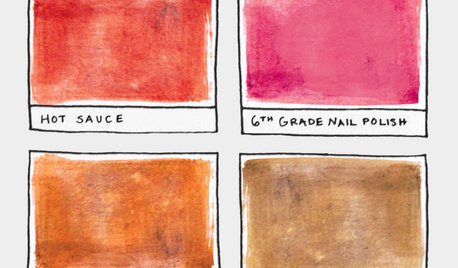Bacterial wilt -- suggestions please!
bcfromfl
15 years ago
Related Stories

KITCHEN DESIGN16 Scrumptious Eat-In Kitchens and What They Want You to Serve
Whether apple-pie cheerful or champagne sophisticated, these eat-in kitchens offer ideas to salivate over
Full Story
GARDENING GUIDESTree Care: Common Tree Diseases and What to Do About Them
Learn to recognize trees that may be affected by diseases or pests so you can quickly take action
Full Story
KITCHEN DESIGN16 Practical Ideas to Borrow From Professional Kitchens
Restaurant kitchens are designed to function efficiently and safely. Why not adopt some of their tricks in your own home?
Full Story
FUN HOUZZ14 Things You Need to Start Doing Now for Your Spouse’s Sake
You have no idea how annoying your habits at home can be. We’re here to tell you
Full Story
KITCHEN DESIGNNew This Week: 2 Kitchens That Show How to Mix Materials
See how these kitchens combine textures, colors and materials into a harmonious whole
Full Story
KITCHEN COUNTERTOPSKitchen Countertop Materials: 5 More Great Alternatives to Granite
Get a delightfully different look for your kitchen counters with lesser-known materials for a wide range of budgets
Full Story
BATHROOM DESIGNPowder Room Essentials to Keep Guests Happy
Set out these bathroom necessities (hello, hand towels) to make your company comfortable and your parties run smoothly
Full Story
FUN HOUZZ16 Creative Paint Color Names We Haven't Seen — Yet
Someday, the namers of new paint colors will finally run out of ideas. We're here to help
Full Story
GARDENING GUIDESBackyard Birds: Invite Entertaining Hummingbirds Into Your Garden
Hummingbirds — unique to the Americas — zip through open landscapes seasonally or year-round. Here’s how to attract them
Full Story
MOST POPULARYour Guide to 15 Popular Kitchen Countertop Materials
Get details and costs on top counter materials to help you narrow down the choices for your kitchen
Full StorySponsored
More Discussions






farkee
digdirt2
Related Professionals
Anderson Landscape Contractors · Lakeland Landscape Contractors · Lehigh Acres Landscape Contractors · Longmont Landscape Contractors · Midland Landscape Contractors · New Braunfels Landscape Contractors · Catonsville General Contractors · Erie General Contractors · Hampton General Contractors · North Lauderdale General Contractors · Rosemead General Contractors · Framingham Decks, Patios & Outdoor Enclosures · Prescott Decks, Patios & Outdoor Enclosures · Vero Beach Decks, Patios & Outdoor Enclosures · Wildomar Decks, Patios & Outdoor EnclosuresbcfromflOriginal Author
carolyn137
bcfromflOriginal Author
farkee
vance8b
bcfromflOriginal Author
vance8b
farkee
farkee
farkee
carolyn137
nctomatoman
bcfromflOriginal Author
carolyn137